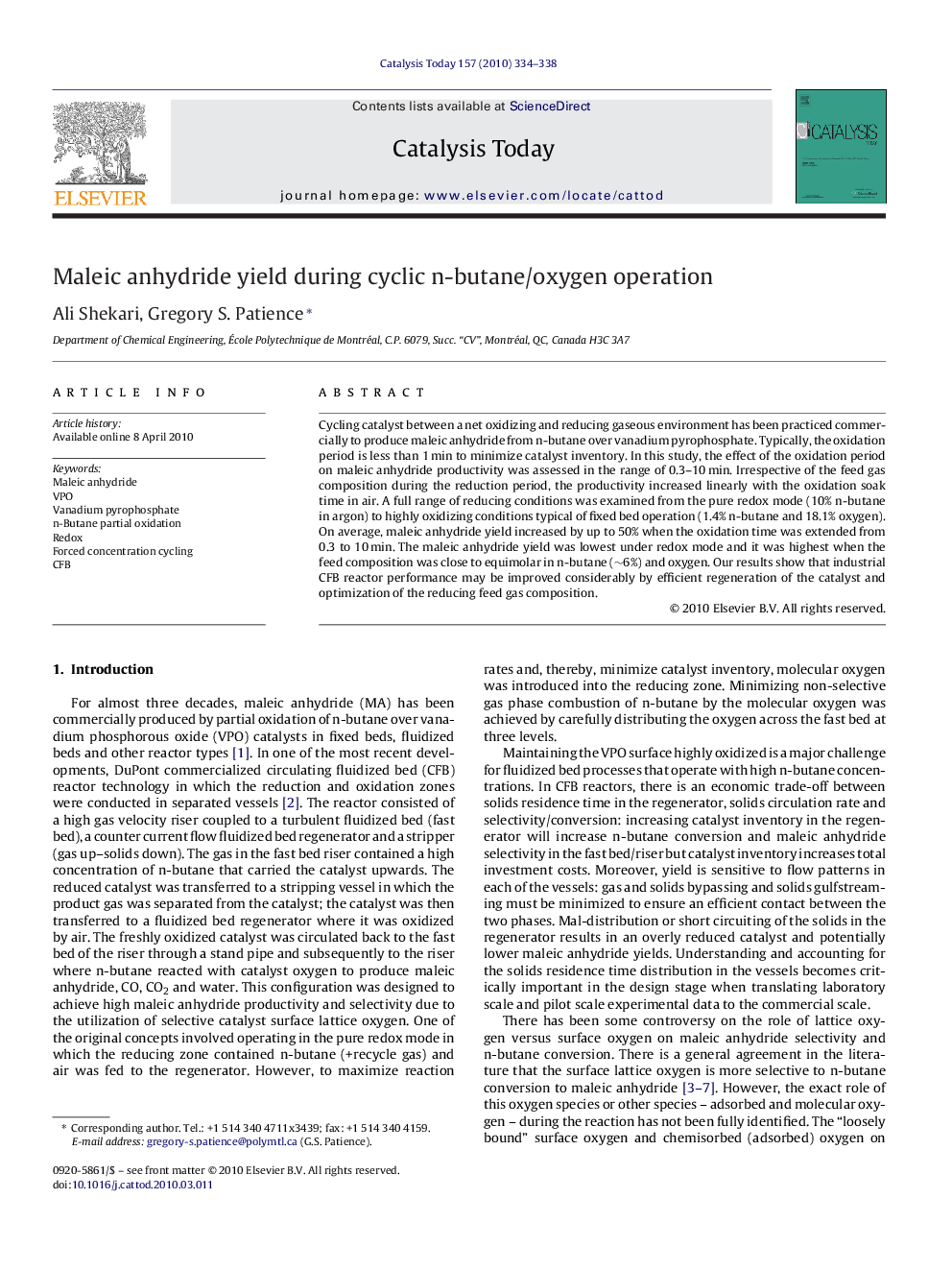| Article ID | Journal | Published Year | Pages | File Type |
|---|---|---|---|---|
| 56241 | Catalysis Today | 2010 | 5 Pages |
Cycling catalyst between a net oxidizing and reducing gaseous environment has been practiced commercially to produce maleic anhydride from n-butane over vanadium pyrophosphate. Typically, the oxidation period is less than 1 min to minimize catalyst inventory. In this study, the effect of the oxidation period on maleic anhydride productivity was assessed in the range of 0.3–10 min. Irrespective of the feed gas composition during the reduction period, the productivity increased linearly with the oxidation soak time in air. A full range of reducing conditions was examined from the pure redox mode (10% n-butane in argon) to highly oxidizing conditions typical of fixed bed operation (1.4% n-butane and 18.1% oxygen). On average, maleic anhydride yield increased by up to 50% when the oxidation time was extended from 0.3 to 10 min. The maleic anhydride yield was lowest under redox mode and it was highest when the feed composition was close to equimolar in n-butane (∼6%) and oxygen. Our results show that industrial CFB reactor performance may be improved considerably by efficient regeneration of the catalyst and optimization of the reducing feed gas composition.
